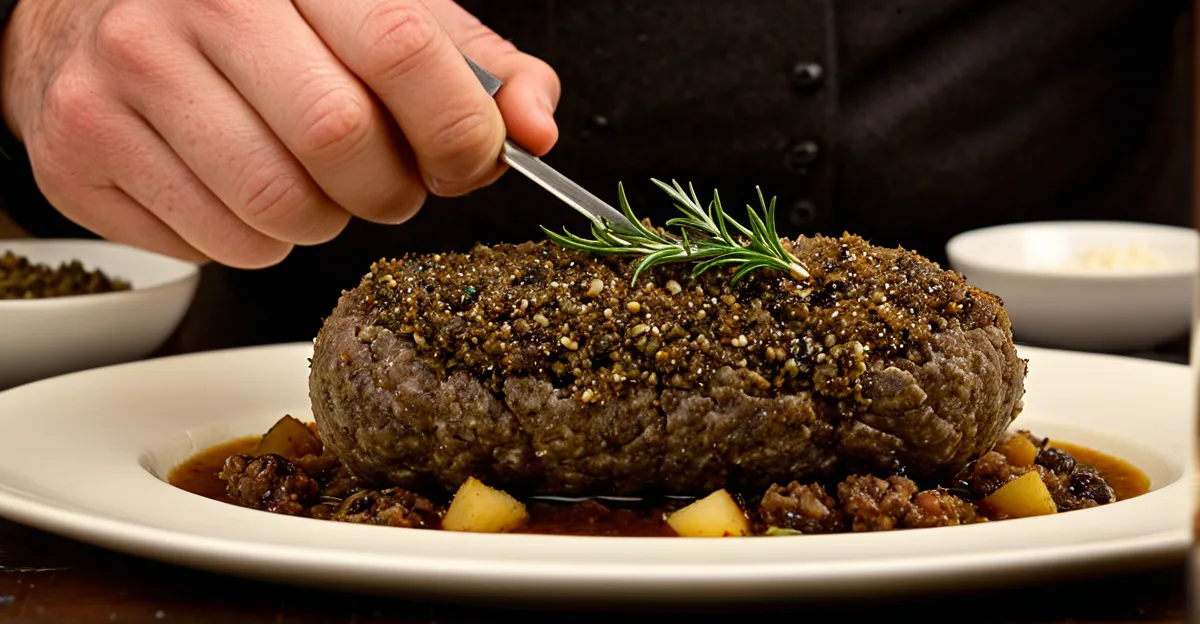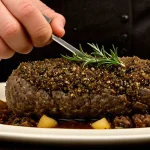Essential Preparation for Perfectly Cooked Haggis
When it comes to haggis preparation, selecting the right ingredients is fundamental. The cornerstone lies in choosing high-quality offal — often a mix of lamb heart, liver, and lungs — as these provide the authentic depth of flavor that haggis is known for. Alongside the offal, using traditional Scottish oats adds that characteristic nutty texture, making their choice and freshness critical for success.
Prepping haggis begins with meticulously cleaning and preparing the casing. This step ensures that the casing is free from any impurities, which can affect both taste and texture. Proper cleaning also helps prevent any unwanted odors during cooking. Once the casing is ready, soaking becomes essential. Soaking the oats in water or stock before mixing with the meat softens them adequately, contributing to that perfect consistency every haggis lover seeks.
Also to read : How Can Traditional UK Dishes Be Modernized for a Healthier Lifestyle?
Seasoning is another key aspect of haggis preparation. Traditionally, a mixture of salt, pepper, and spices like cayenne pepper are employed to not only flavor the dish but also enhance the overall experience. The seasoning should be evenly combined with the offal and soaked oats, allowing the flavors to meld thoroughly before encasing. This careful balance during prep influences the final texture and taste, setting the stage for a perfectly cooked haggis.
Expert Cooking Techniques for Haggis
Mastering cooking haggis requires attention to methods that preserve the authentic texture and moisture integral to traditional Scottish cooking. The primary technique involves gentle simmering rather than boiling vigorously. Simmering at a steady, moderate heat prevents the casing from bursting while ensuring the filling cooks evenly throughout. A common question is: What is the ideal cooking time and temperature for haggis? The best approach is to simmer the haggis for about 1.5 to 2 hours in water maintained just below boiling point, roughly around 85–90°C (185–195°F). This allows the heat to penetrate slowly, avoiding overcooking the delicate offal and oats inside.
This might interest you : What Makes British Culinary Traditions Unique Today?
Using stock instead of plain water is an expert secret that greatly enhances depth of flavour in haggis. Simmering the haggis in a well-seasoned lamb or beef stock infuses subtle meaty undertones into the dish while adding moisture. This technique elevates the traditional Scottish cooking experience by marrying the robust ingredients with rich, layered tastes.
Additionally, handling the haggis carefully during cooking is crucial. It’s advisable to prick tiny holes in the casing before cooking to release steam and prevent splitting. Gentle turning of the haggis midway ensures even cooking on all sides without damaging the casing. These haggis techniques guarantee a moist, tender dish that embodies true Scottish culinary craftsmanship.
Common Mistakes and How to Avoid Them
Avoiding haggis mistakes is crucial to achieving that perfect balance of flavor and texture. One frequent error is overcooking, which leads to a dry, crumbly haggis with a tough casing. Conversely, undercooking results in a mushy interior and incomplete melding of flavors. What is the ideal way to prevent these problems? The answer lies in precise timing and temperature control: simmer the haggis gently at about 85–90°C (185–195°F) for 1.5 to 2 hours, ensuring thorough but gentle cooking.
Another common pitfall involves casing management, particularly split casing. This happens when the haggis is exposed to rapid temperature changes or vigorous boiling, causing the casing to burst. Pricking small holes before cooking allows steam to escape, preventing splitting. Additionally, handle the haggis carefully when turning it during cooking to avoid tearing the casing. These expert tips help maintain the structural integrity essential to an enjoyable dish.
Finally, troubleshooting haggis also means paying attention to moisture control. If the filling seems too dry, soaking the oats well during prepping haggis can prevent dryness. Conversely, over-soaking or adding excess liquid may cause sogginess. Balancing these elements ensures the texture remains true to traditional Scottish cooking. These precautions combined minimize errors and produce consistently excellent results.
Enhancing Flavour and Texture: Chef-Recommended Secrets
Achieving a truly flavourful haggis relies heavily on the right blend of spices and aromatics. While traditional haggis preparation uses salt, pepper, and cayenne, chefs often recommend adding subtle layers such as nutmeg, coriander, or even a pinch of smoked paprika. These choices contribute complexity without overpowering the fundamental savory profile that defines haggis.
Balancing the ratio of oats to meat is another critical factor in enhancing the texture improvement. Too many oats can cause dryness and a crumbly mouthfeel, while too much meat may make the dish dense and heavy. Expert cooks find success by soaking the oats thoroughly and combining them with well-seasoned offal, yielding a harmonious blend that is moist yet distinct in texture.
Resting the haggis before serving is an often overlooked but essential chef secret. After cooking, allowing the haggis to rest for 10 to 15 minutes lets the filling firm up slightly, which improves slicing and prevents it from falling apart on the plate. This step also enables the flavours to meld fully, offering a richer, more satisfying experience. Incorporating these chef secrets consistently elevates traditional Scottish cooking into an artful presentation of authentic taste and texture.
Traditional Serving and Presentation
Presenting haggis with care enhances both its appeal and the dining experience. Classic haggis serving suggestions often include traditional Scottish accompaniments such as neeps (mashed turnips) and tatties (mashed potatoes). These sides complement the rich flavors of the haggis, balancing its savory intensity with creamy textures and mild sweetness. Accompanying the dish with a whisky sauce adds a luxurious element, infusing subtle warmth and depth that elevates the overall plate.
When it comes to haggis presentation, slicing the cooked haggis correctly is key. After resting, slice the haggis with a sharp knife to maintain intact portions that showcase the coarse texture of the oats and offal mixture without crumbling. Arranging these slices neatly on the plate beside the neeps and tatties creates a visually inviting meal, reflecting traditional Scottish culinary artistry.
For a memorable Burns Night meal, attention to detail in both serving and plating enhances the celebration. Serving haggis warm but not piping hot preserves its texture and flavor integrity. Garnishing the dish with fresh parsley or a light drizzle of whisky sauce invites guests to savor every element fully. These simple yet effective tips ensure the rich history and culture behind haggis are honored and enjoyed in authentic style.








